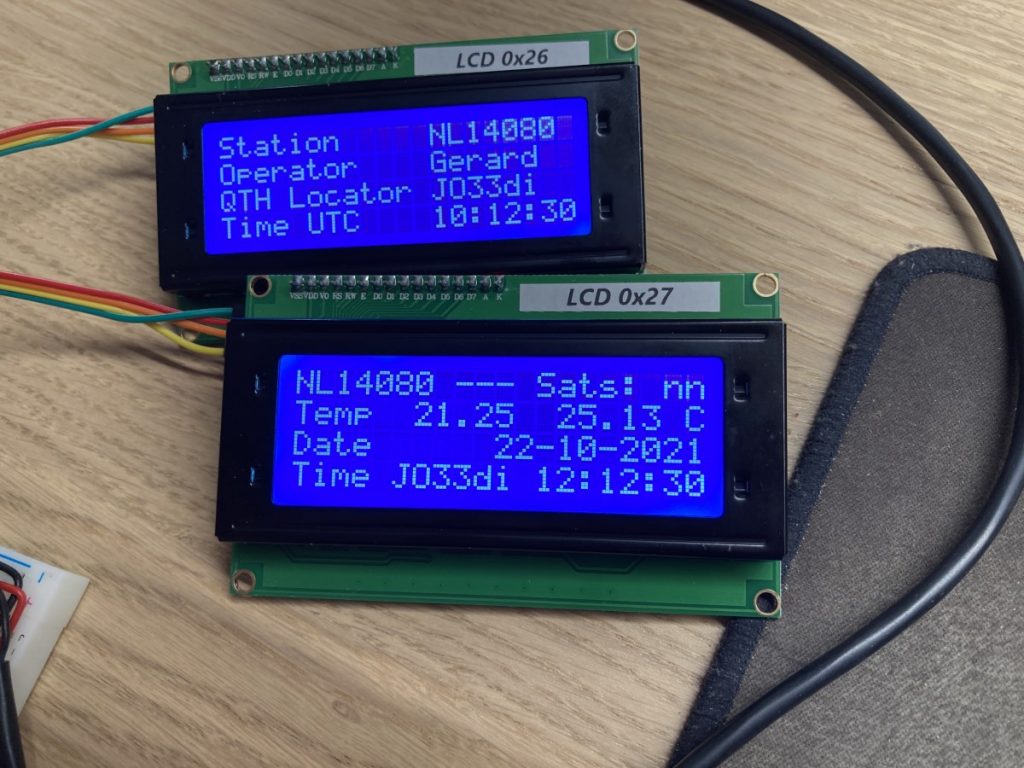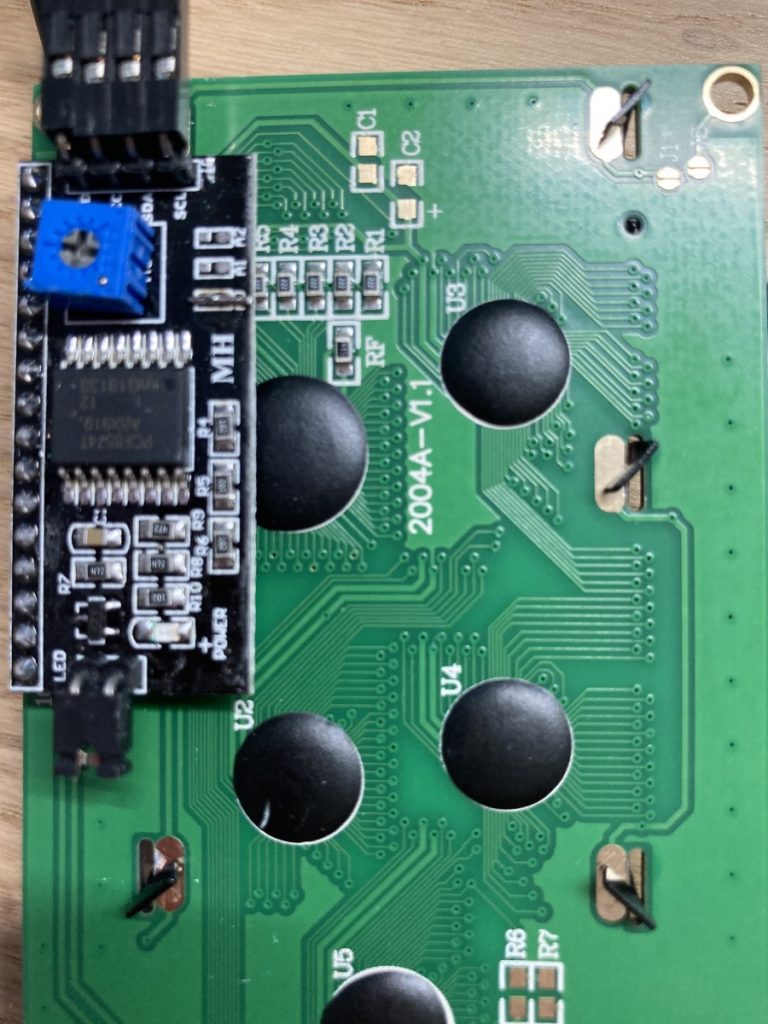Today I worked on version 0.1 of my new project. It’s in the prototype stage as you can see in the picture below. For this test it’s an Arduino Uno (clone by Velleman), two DS18B20 temperature sensors and two 20 x 4 displays.
This version is for setting up the code base. The temperature sensors do work. One is the room temperature, the second one is on top of my desktop computer (that’s why it’s indicating 25.13 C at the time).
Temperature sensors
The temperature sensors are One-Wire sensors, connected to pin 2 of the Arduino board.
Displays
The displays are connected through an I2C interface (a two wire interface). You can set the address of these displays on the I2C ‘backpack’ on the backside of the displays, by soldering little wires to connect two solder pads.
In the picture on the right you can see the small wire I soldered over them, just to the right of the blue box. (click to make it bigger)
The default address of these displays (the ones I got anyway) is 0x27. It has three address lines, A0, A1 and A2, that are all pulled high, meaning the address is 0x20 plus three binary 1’s, 0b111, adding op to 7. The base address in 0x20, so the default is 0x27.
When you, like I did, solder a wire over the A0 pads, the offset becomes 0b110, being equal to 6, so the new address becomes 0x20 plus 0x06 equals 0x26.
You can find those addresses in the code.
Open source
Should you also want to give it a try, I made the code available on my Github page in this repository.
Future plans
As for now, the time display is not working yet, but in the top right corner of the bottom display you can find a hint of what’s coming in future versions.
GPS time and location
There will be a GPS module involved, and the number of satellites to which it’s connected will be displayed there. This will also be able to display our exact position. Convenient when we’re mobile (and on battery power).
Connected board
The Arduino Uno will be replaced with another module that has WiFi on board and will thus be able to connect to NTP servers. When the satellites are out of range, we can extract the time from the internet (provided we have internet and WiFi of course…).
Enclosure and keyboard
Of course in the end a nice enclosure will complete the build. I might even throw in a small 4 x 4 keyboard to enhance the operation and make it a multi functional work horse…


